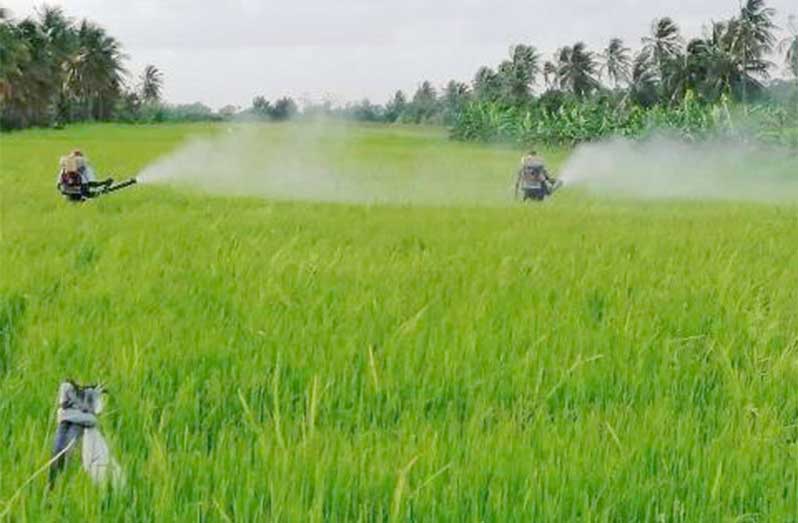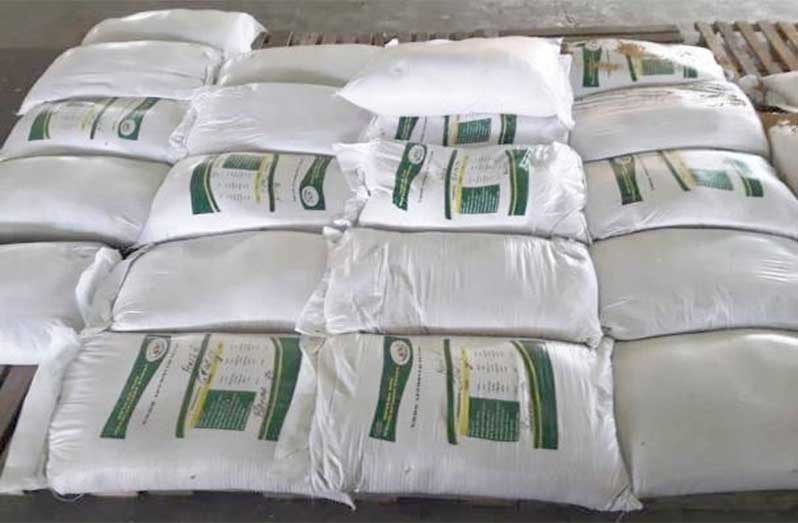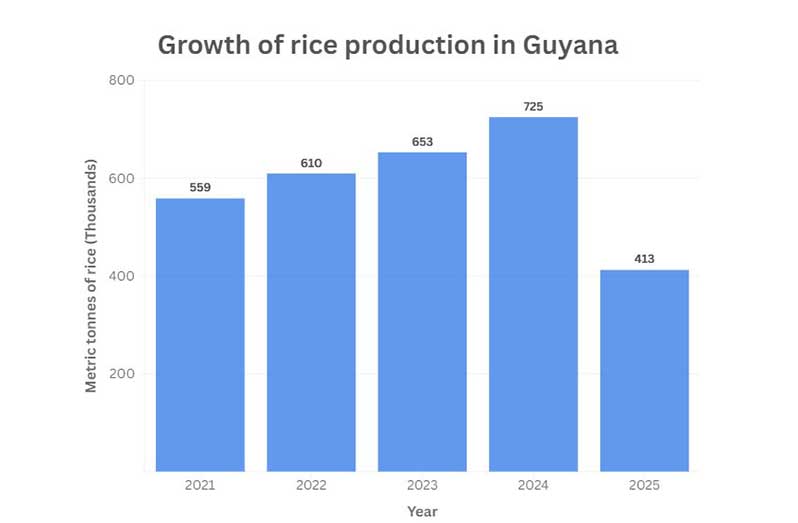FOR the first time in history, Guyana is on track to produce 820,000 metric tonnes of rice, marking a major achievement in the country’s agricultural sector.
Minister of Agriculture Zulfikar Mustapha announced this during an engagement with residents and farmers in Region Six on Saturday.

“This is a very important industry; we not only have to maintain it, but we have to expand it. Our objective in the coming years from now is to produce a million tonnes of rice, so we want Guyana to be one of the main food-producing countries in the region,” Minister Mustapha said.
In the last five years, production figures have steadily increased due to various government investments in high-yielding varieties, subsidies and infrastructure, with 2024’s annual rice production meeting a record-breaking 725,282 metric tonnes.
The first crop of 2025 has already surpassed half of the target, recording a total of 413,239 metric tonnes, setting Guyana on a strong path to achieving its annual goal.
Several key initiatives have been implemented that are driving this success, all aimed at reducing production costs and improving farmers’ livelihoods.
Among these measures, adequate resources are being provided to farmers to help boost yields, including increased fertiliser allocation. Farmers can now receive an entire bag per acre, rather than half a bag.
Additionally, the Guyana Rice Development Board (GRDB) has introduced a new payment system that enables the agency to make direct payments to farmers at a rate of $300 per bag.
This ensures greater transparency and accountability in faster transactions, resulting in fair compensation for rice farmers.
To combat the infestation of paddy bugs, the GRBD conducted a series of interventions, including field spraying to minimise harmful effects on crops.

Plans are also underway to establish a dedicated interest-free bank to support investments in technology, expansion of farmlands and modernised equipment to assist with the production process.
President, Dr Mohamed Irfaan Ali also announced that soon, farmers will also be able to benefit from a tool that provides them access to real-time information while in the fields.
“Within four months, the farmers must be able to use the tool we’ve been investing in to access education in the field, to access real-time information in the field, to access weather in the fields, to access extension support in the field and to access technology in the field.”
These interventions, along with the government’s drive to strengthen the agricultural sector, will position the country to not only meet its long-term production goals, but also enhance food security and create more opportunities for farmers across Guyana. [DPI]





.jpg)








